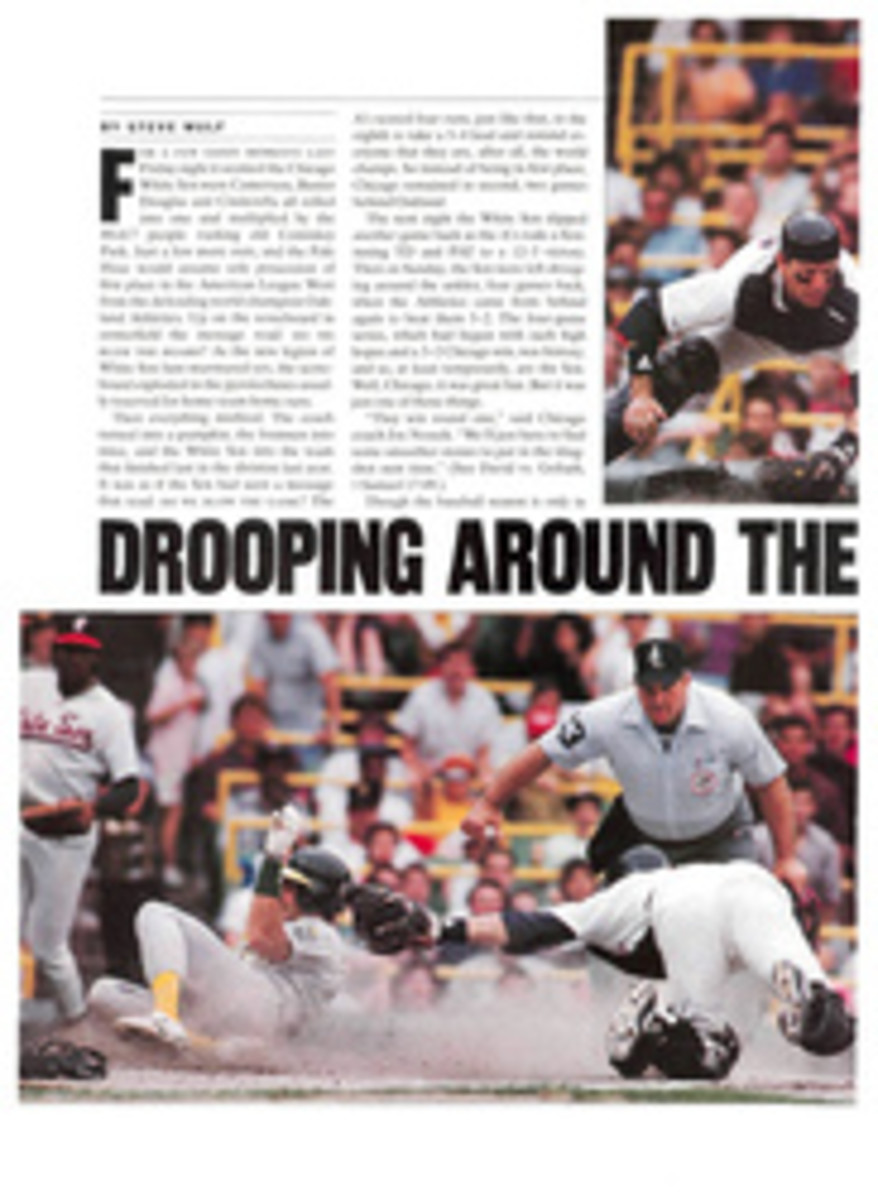
NO MORE STANDING ON CEREMONY
After seven straight hours in Free Standing Area G at Centre Court, Wimbledon, everybody and everything begins to look like a Coke.
It's a little like one of those B movies in which the French Foreign Legion cadet gets stranded and crawls through the Sahara until he comes upon a palm-shrouded oasis, only to discover that it's a mirage. We're talking parched. But at least Pierre can sit down and relax if he wants.
No one sits in Free Standing Area G, and once you're in and the canteen goes dry, no one drinks. Or eats. Or visits the bathroom, for that matter. Oh, they have refreshments at Wimbledon. It's just that you're not permitted to leave the standing area to buy anything—unless you want to queue up again in a line that runs halfway to Big Ben.
Standing room at Centre Court of the All England Club was actually a pair of concrete holding pens, one on each side of the court, six rows back from the lush green lawn. Standees needed only a daily pass to enter and peer over shoulders and under armpits for as long as their rations held out.
Skeptics might wonder why normally sane humans would employ survivalist tactics to watch a tennis match, or even Frew McMillan and Rosie Casals playing mixed doubles. The doubters have probably never stood at Centre Court. And because of some extensive redecorating at the All England Club over the winter, they never will. More on that shortly.
Why stand? First, Wimbledon has for years been the biggest bargain in spectator sports. In standing room, that is; a ticket for a seat for the men's final can set you back $1,400 if you get it through a broker. But for about $10, less than it costs to sit in the nosebleed seats at a Detroit Lion game, you could go vertical and yell like a loon 30 feet away from John McEnroe.
Second, while Princess Di and Lord Worcestershire chitchat in the royal box, standing room features a spirited point-counterpoint between points. Before the day's play is complete, the brotherhood of fallen arches will have solved such sticky problems as who will win the men's singles, the legitimacy of the British army's occupation of Northern Ireland and whether or not Tatum O'Neal's sunglasses work with that blouse.
Finally, this is Wimbledon. For anybody who has ever swung a Prince at a Perm, welcome to heaven on turf. Nobody appreciates that more than the occupants of Free Standing Area G.
Now the bad news. Last February, standees had their Tretorns pulled right out from under them. The All England Club announced that it would have to comply with the 1987 Fire Safety and Safety of Places of Sport Act. For Wimbledon that meant no more standing room at Centre Court.
"If there ever was a fire at Wimbledon, everybody would die anyway, because they're so polite they'd all be saying, 'After you,' 'No, after you,' " says Sue Youngman, a spokesperson for the club. "But safety is never something to be taken lightly, and we had no choice but to agree to the changes."
Nonetheless, there is some debate as to whether or not all of the standing places had to be sacrificed.
"We told the club that they would need to conform to the regulations by reducing the number of people in the standing room," said Robin Pryke of the London Borough of Merton Council, which issues Wimbledon's safety certificate. "We did not ask them to remove the standing places. That was something that the club elected to do on its own."
The All England Club responded by saying that the regulations on capacity would have reduced the number of standees from 2,000 to a paltry 300.
Jackhammers have since rendered the discussion moot. For the 1990 championships there will be several hundred seats in place of the standees at Centre Court. "It's a sad day for Wimbledon and its fans," says Christopher Gorringe, chief executive of the All England Club. "The character of the tournament has been changed, and that is a tragedy."
O.K., so it's not Hamlet, but it is a double fault to British tradition. I remember a few years back when I procured a ticket to a seat at Centre Court. I sat for half an hour, staring at my compatriots in standing room. Something didn't feel right. It was the first time in three visits to Centre Court that I had been off my feet. I gave the ticket away, rejoined the queue, and soon I was back home.
Alas, from now on, Free Standing Area G will be just a mirage.
ILLUSTRATION
PETER DE SEVE

